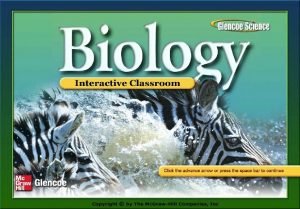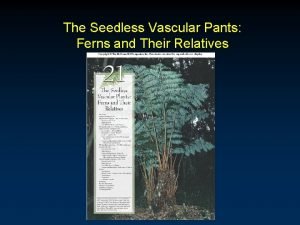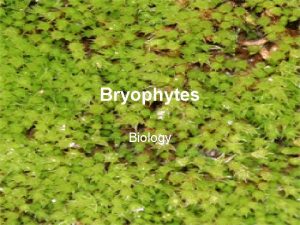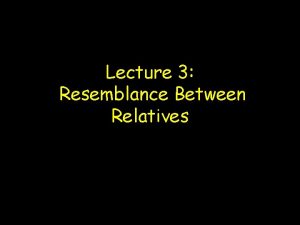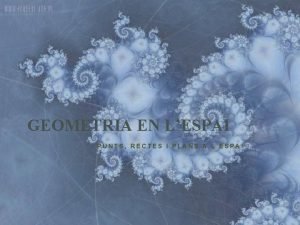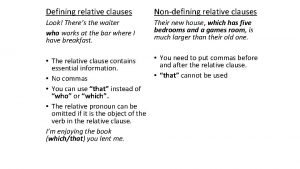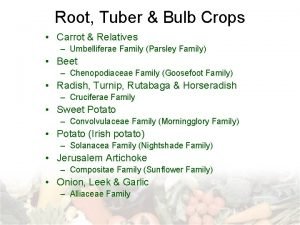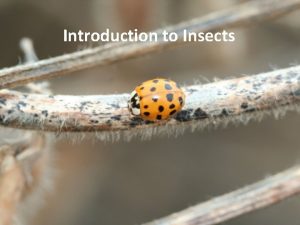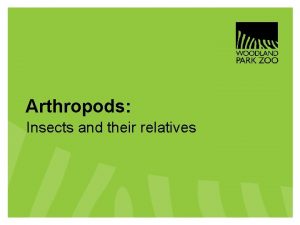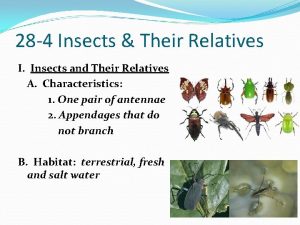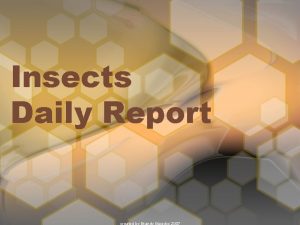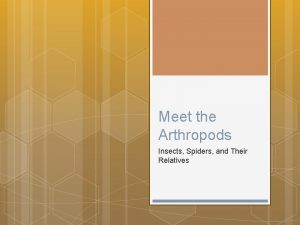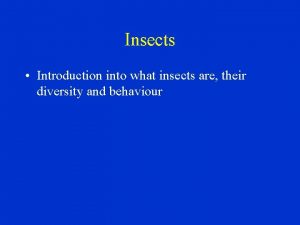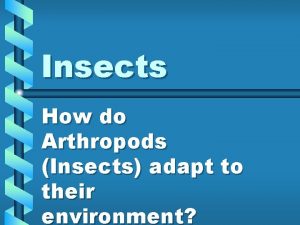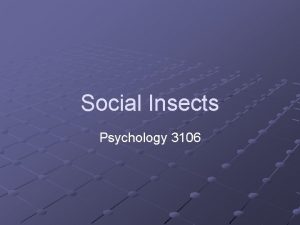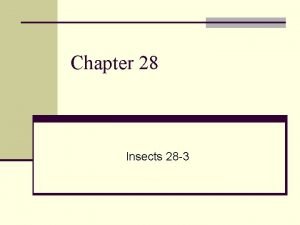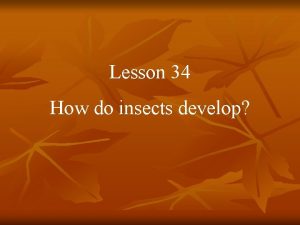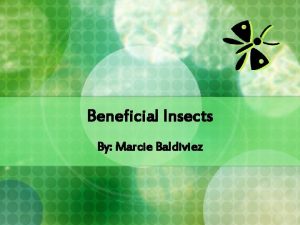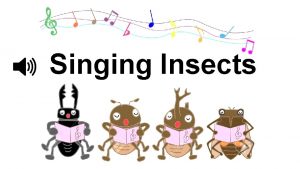Introduction to Insects Outline Insects and their relatives


















- Slides: 18

Introduction to Insects

Outline • Insects and their relatives • How insects rule the world • Insect anatomy and biology

Insects and their relatives • Arthropods are numerous and diverse – Insects (beetles, flies, moths, earwigs, aphids) – Arachnids (spiders, ticks, mites, scorpions) – Crustaceans (crayfish, crabs, lobsters, sowbugs) – Centipedes, millipedes • Exoskeleton is a hard outer shell • Jointed appendages, segmented body • Not arthropods: slugs, snails, earthworms

Basic insect body plan Head Thorax Abdomen

Basic insect body plan Abdomen Thorax Head

Basic arachnid body plan Cephalothorax Abdomen

Basic arachnid body plan Abdomen Cephalothorax

Insects Arachnids • 3 body regions • 2 body regions • 1 pair of antennae • No antennae • 3 pair of legs • 4 pair of legs • 2 pair of wings • No wings

Insects rule the world! • There are more insects than all other plants and animals combined • There are more than 1 million different species • 1 out of every 5 animals is a beetle!

Why are insects so successful? • Small size • Multigenerational • Flight • Metamorphosis • Wide variety in food choices • Wide variety in habitat resources © Marlin E. Rice

Insect metamorphosis Complete metamorphosis: egg, Incomplete metamorphosis: larva, pupa, adult egg, nymph, adult e. g. , beetles, butterflies, flies e. g. , grasshoppers, true bugs Images from Cornell University, Http: //nides. bc. ca/Assignments/Insects/Metamorphosis 3. htm

Insects eat everything • Carnivore, animal matter • Herbivore, plant matter • Omnivore, plant and animal matter • Detrivore, organic matter • Saprophore, decaying matter

Are these insects? © Marlin E. Rice

How to ID insects: wings beetle © Marlin E. Rice grasshopper © Marlin E. Rice wasp L. Jesse true bug earwig L. Jesse butterfly © Marlin E. Rice fly L. Jesse

How to ID insects: mouthparts Piercing-sucking: mosquitoes, true bugs Sponging: house fly Siphoning: butterflies, moths Chewing: grasshoppers, beetles, praying mantis Images on this page from R. Bessin, University of Kentucky

How to ID insects: antennae freenaturepictures. com

How to ID insects: legs grasping pollen-carrying walking L. Jesse jumping © Marlin E. Rice Paul M. Choate, University of Florida digging swimming and grasping

Summary • There are many keys to help in the accurate identification of insects • Wings, antennae, legs, mouthparts © Marlin E. Rice
 General characteristics of arthropods
General characteristics of arthropods Ferns phylum
Ferns phylum Mosses and their relatives are generally called
Mosses and their relatives are generally called Resemblance between relatives
Resemblance between relatives Posicions relatives de tres plans
Posicions relatives de tres plans Relatives risiko interpretation
Relatives risiko interpretation Non defining relatives clauses
Non defining relatives clauses Non defining relatives clauses
Non defining relatives clauses Wolverine relatives
Wolverine relatives Greek god family tree
Greek god family tree Ferret relative
Ferret relative Biography on kobe bryant
Biography on kobe bryant Carrot relatives
Carrot relatives Join the sentence with relative pronoun
Join the sentence with relative pronoun Napoleon's relatives ruled
Napoleon's relatives ruled Relative pronouns jeopardy
Relative pronouns jeopardy Hadith about relationship
Hadith about relationship O que é um pronome relativo
O que é um pronome relativo The closest algal relatives of land plants are
The closest algal relatives of land plants are
